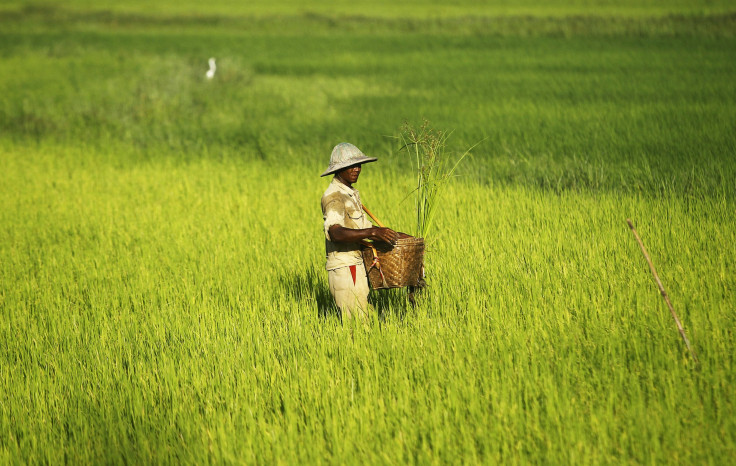Myanmar's Target Of Exporting 3 Million Tons Of Rice During Fiscal 2014 Is Impossible To Achieve: Experts

Myanmar is growing fast, but at least one sector isn't growing as fast as the government wants. The nation’s leaders are striving to export 3 million tons of rice during the 12 months ending March 2014, which would mark a 43 percent increase over the previous period, a target that industry experts and government officials say is impossible to achieve.
In the first half of the 20th century, under British rule, Myanmar was the world’s top rice exporter. But after the military junta took over in 1962, the rice industry production fell because of antiquated practices and poor seed quality, as well as western sanctions, which limited the destination of its exports to predominantly Africa, according to Radio Free Asia.
About 2.1 million tons of rice was exported in fiscal 2013, 2.8 times the 750,000 tons exported in fiscal 2012, according to Oryza, a leading news site for rice. While the jump in 2012 was huge, 2.1 million is merely 41 percent of the amount Myanmar shipped at its peak 79 years ago.
“It’s quite impossible to export 3 million tons of rice, simple because we can’t expect dramatic increase in rice production this year,” said an expert at the Ministry of Agriculture who requested anonymity, according to Reuters.
The country’s overall production was 13-14 million tons in the last fiscal year, while Vietnam’s total output during the same period reached 44 million tons, and Thailand’s stood at 37 million tons.
Myanmar has the potential to catch up with regional competitors with its abundance of idle land and rivers that could be used to grow the crop, but it'll have to educate farmers and use better equipment to significantly improve its yields, according to Radio Free Asia.
It's also well-situated, bordering countries with booming economic growth – India, China, Thailand, the rest of the Southeast Asian countries, and has many ports on the Indian Ocean.
From April to July this year, Myanmar exported 320,000 tons of rice, generating $124 million, according to data from the Ministry of Commerce. An official from the Ministry of Agriculture said water was the main source of the production problem – long-lasting floods swamped paddies in the southern delta of Myanmar, while low water levels in dams affected the summer crop in the central regions.
Myanmar has sought to borrow industry expertise from neighboring Thailand by inviting millers and exporters, but foreign investors and experts are hesitant as Myanmar still lacks clear regulations in the sector, as well as sufficient infrastructure.
“We’re concerned about energy and electricity, which are not quite stable at this stage,” Manas Kitprasert, president of the Thai Rice Millers Association, said. “We also need a better logistics system to export smoothly at manageable costs.”
Quality represents another hurdle. Most of the rice Myanmar produces is a lower quality, 25 percent broken grain, about half of which is sold to China. Myanmar’s main competitors, Thailand, India and Vietnam, all produce better quality grains, and even those countries are struggling with low demand, as importing countries begin to grow more rice domestically, Reuters reported.
Even faced with these hurdles, Myanmar seems intent on recreating its past glory. A series of changes are poised to take off, in order to stimulate the rice industry.
“The Ministry of Commerce has recently shown the first signs of opening up Myanmar’s retail and wholesale rice markets, in anticipation of new trade requirements under the ASEAN Economic Community,” Christian Lewis, Southeast Asia analyst for the Eurasia Group, a leading global political risk consulting firm, told the International Business Times.
“While currently, Myanmar is not competitive with regional players, particularly as Thai rice stockpiles may be dumped on the market in the next year, an injection of development funds into electrification and agritech could potentially have a fairly rapid impact,” Lewis added, speaking to the dynamic nature of Myanmar’s economy. “Another important factor to watch is whether the government can work with international development agencies to simplify the regulatory framework around cooperatives and generally ease access to credit, both of which can lead to gains in farm mechanization.”
© Copyright IBTimes 2024. All rights reserved.




















